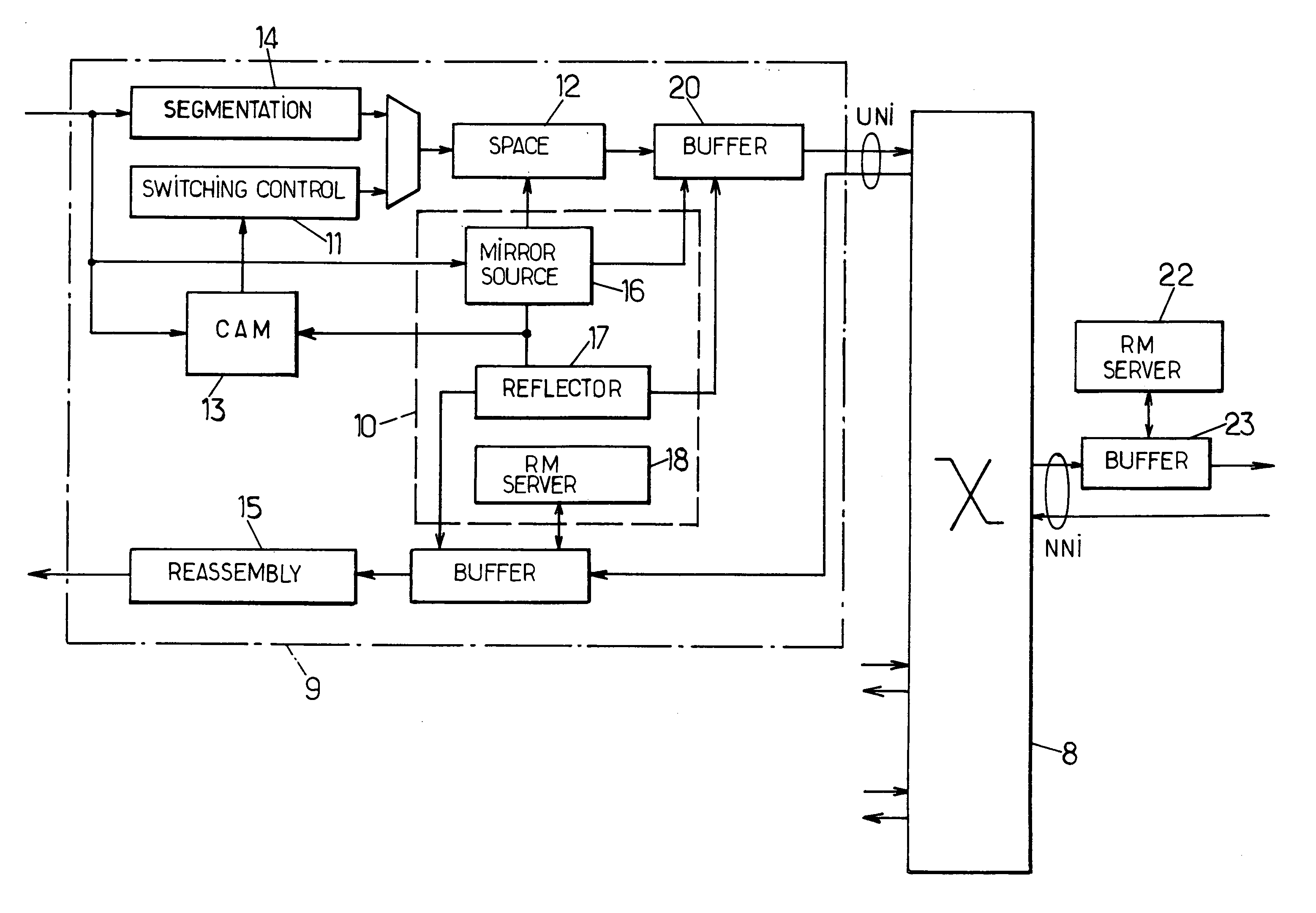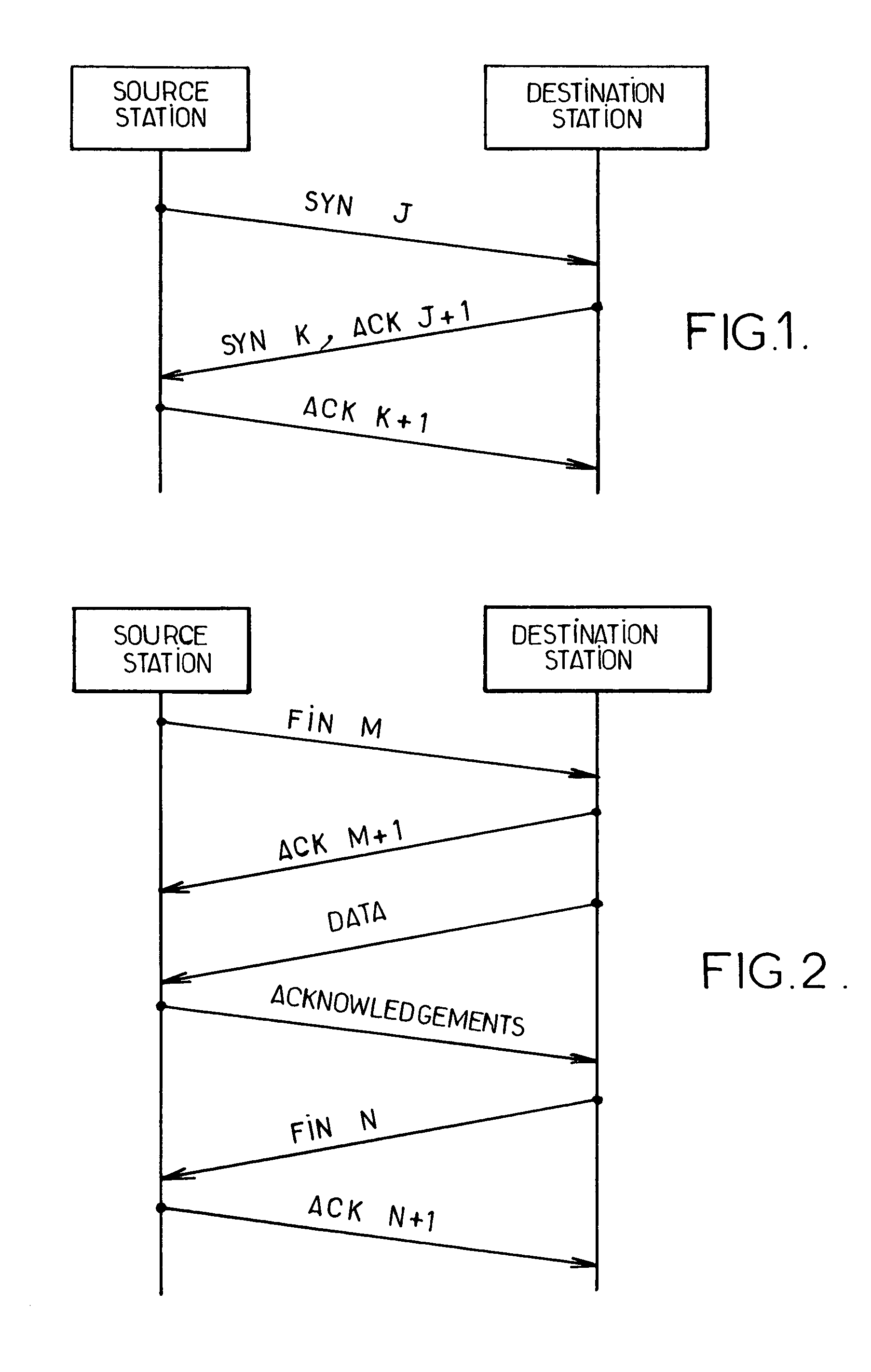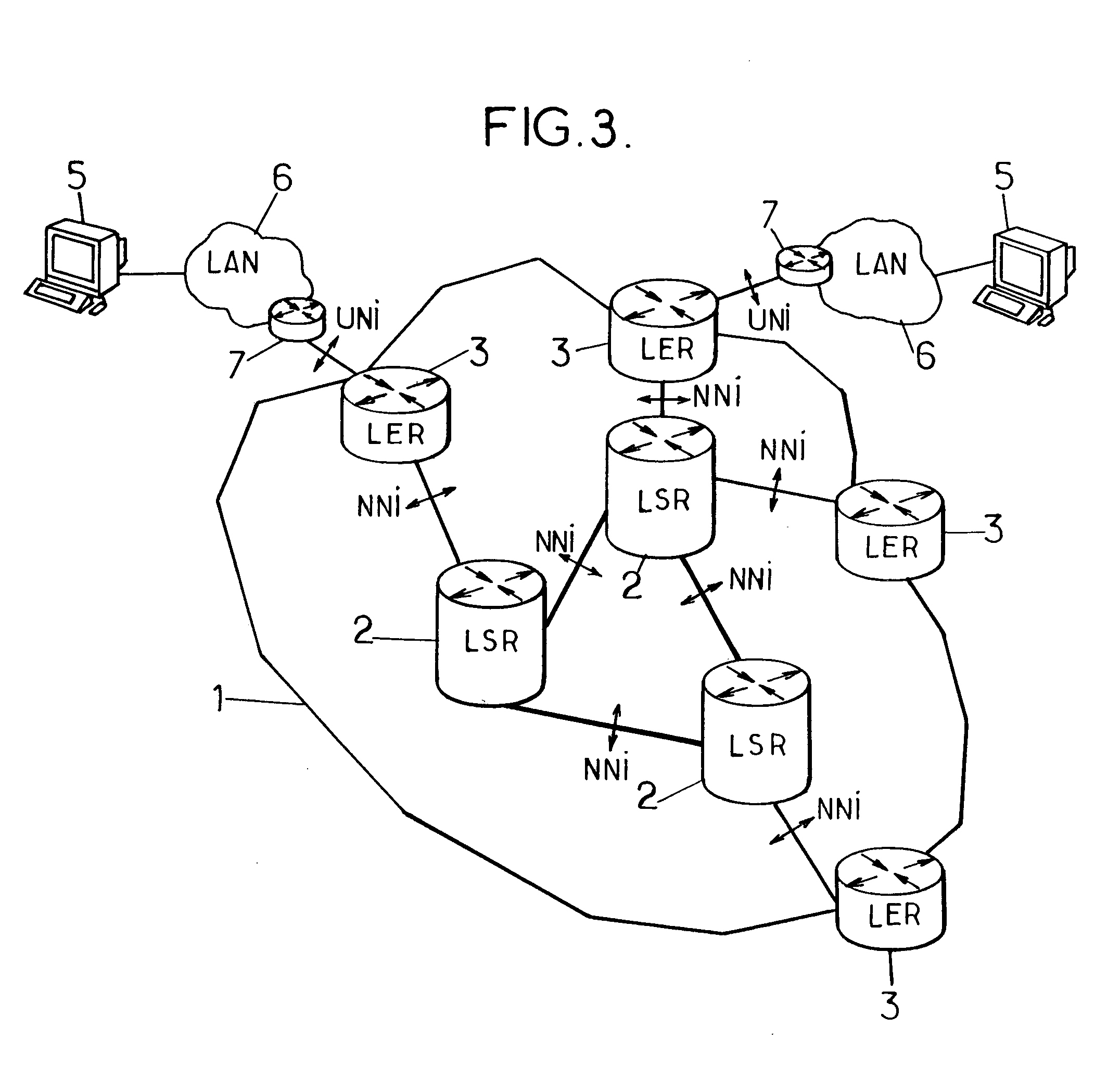Method of transmitting data flows over an ATM network and device for implementing the method
a data flow and atm network technology, applied in data switching networks, instruments, frequency-division multiplexes, etc., can solve the problems of significant degradation in the performance of applications, tcp cannot guarantee the quality of service offered to applications in terms of available speed and transfer time, and the inability to achieve the quality of service objectives (transfer time, usable bandwidth and information loss rate) to be guaranteed
- Summary
- Abstract
- Description
- Claims
- Application Information
AI Technical Summary
Benefits of technology
Problems solved by technology
Method used
Image
Examples
Embodiment Construction
Initiating and terminating TCP connections
[0049]A TCP connection is established between a port of a source station and a port of a destination station. Each of the two stations has an IP address. Each port assigned to an application run on a station has a port number which is valid for this station. The TCP connection is therefore mainly characterised by a quartet comprising .
[0050]As stipulated in the RFC 793 issued by the IETF (>), a TCP connection between two stations is initiated by an exchange of messages (or segments) between the source and destination ports, as illustrated in FIG. 1. The first message SYN J (where J is a sequence number) is a TCP connection establishment request. It incorporates the numbers of the source port (Ps) and destination port (Pd) and is encapsulated in an IP datagram containing the IP addresses of the source (@IPs) and destination (@IPd) stations. Establishment of the connection in the source→destination direction is acknowledged by the second messa...
PUM
 Login to View More
Login to View More Abstract
Description
Claims
Application Information
 Login to View More
Login to View More - R&D
- Intellectual Property
- Life Sciences
- Materials
- Tech Scout
- Unparalleled Data Quality
- Higher Quality Content
- 60% Fewer Hallucinations
Browse by: Latest US Patents, China's latest patents, Technical Efficacy Thesaurus, Application Domain, Technology Topic, Popular Technical Reports.
© 2025 PatSnap. All rights reserved.Legal|Privacy policy|Modern Slavery Act Transparency Statement|Sitemap|About US| Contact US: help@patsnap.com



